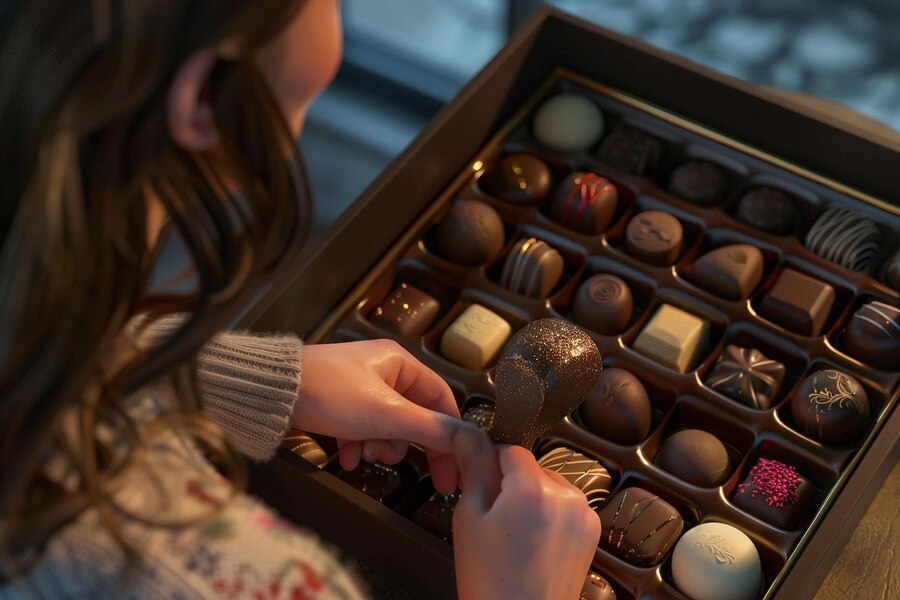Indulging in the richness of chocolate is a universally beloved experience. But what if I told you that chocolate not only delights the taste buds but also has the power to stimulate desire and enhance intimacy? Welcome to the world of aphrodisiac chocolate, where the lusciousness of cocoa meets the allure of sensuality. In this article, we embark on a tantalizing journey through the history, science, and cultural significance of aphrodisiac chocolate, exploring its impact on romance and pleasure.
The Historical Romance of Chocolate
Origins and Ancient Reverence
Chocolate’s association with love and desire traces back thousands of years to ancient Mesoamerican civilizations like the Mayans and Aztecs. These cultures revered chocolate not only as a culinary delight but also as a sacred elixir with mystical properties. It was believed to bestow strength, vitality, and even act as a potent aphrodisiac.
Chocolate’s European Romance
When chocolate made its way to Europe in the 16th century, its reputation as a romantic indulgence only grew. European aristocrats embraced chocolate as a luxurious delicacy, often serving it during lavish banquets and romantic rendezvous. Its rich, decadent flavor and purported aphrodisiac qualities made it a symbol of passion and seduction among the elite.
The Science Behind Aphrodisiac Chocolate
Chemical Components and Effects
What gives chocolate its aphrodisiac allure? The answer lies in its complex chemical makeup. Chocolate contains several compounds that have been linked to mood enhancement and arousal, including phenylethylamine (PEA), serotonin, and theobromine.
PEA, often referred to as the “love chemical,” is known to stimulate the release of endorphins in the brain, creating feelings of euphoria and excitement. Serotonin, a neurotransmitter associated with happiness and well-being, contributes to chocolate’s mood-lifting effects. Additionally, theobromine, a stimulant similar to caffeine, can increase heart rate and induce sensations of alertness and arousal.
Psychological Associations
Beyond its chemical composition, chocolate also holds significant psychological associations with pleasure and indulgence. The act of consuming chocolate triggers the brain’s reward system, leading to feelings of satisfaction and contentment. This association between chocolate and pleasure can translate into heightened sensual experiences, making it a natural choice for romantic encounters.
Cultural Significance and Symbolism
Romantic Rituals and Traditions
Throughout history, chocolate has been intertwined with various romantic rituals and traditions across cultures. In many societies, offering chocolate is considered a gesture of affection and courtship, symbolizing love, desire, and devotion. From Valentine’s Day gifts to wedding favors, chocolate plays a central role in expressing romantic sentiments and strengthening bonds between partners.
Artistic Inspiration and Romanticism
The allure of chocolate extends beyond its taste and aroma; it has also inspired artists, writers, and poets to explore themes of love and sensuality. From the sultry paintings of the Baroque era to the romantic verses of Pablo Neruda, chocolate has been immortalized as a symbol of desire and passion in countless works of art and literature. Its decadent essence evokes a sense of intimacy and longing, capturing the essence of romantic escapades.
Modern Interpretations and Innovations
Crafting Aphrodisiac Chocolate
In recent years, artisans and chocolatiers have embraced the concept of aphrodisiac chocolate, infusing their creations with exotic ingredients and flavors believed to enhance libido and arousal. From spicy chili-infused chocolates to floral-scented truffles, these confections aim to tantalize the senses and ignite passion in those who indulge.
Health Benefits and Wellness Trends
Beyond its romantic connotations, chocolate is also celebrated for its potential health benefits. Dark chocolate, in particular, is rich in antioxidants and flavonoids, which have been linked to improved heart health and cognitive function. As wellness trends continue to gain momentum, chocolate enthusiasts are seeking out high-quality, ethically sourced varieties that offer both indulgence and nourishment.
The Art of Sensual Enjoyment
Creating Intimate Experiences
Whether shared between lovers or savored alone, aphrodisiac chocolate invites us to indulge in moments of sensual pleasure and connection. From intimate dinners to cozy nights in, incorporating chocolate into romantic experiences can heighten sensory awareness and deepen emotional bonds.
Exploring Sensory Pleasure
Beyond its taste and aroma, chocolate engages all the senses, offering a multisensory experience that amplifies pleasure and desire. The velvety texture, the satisfying snap as it breaks, and the lingering sweetness on the tongue—all contribute to the sensual allure of chocolate, making it a beloved indulgence for lovers and romantics alike.
Conclusion
Aphrodisiac chocolate represents more than just a culinary delight; it embodies the timeless allure of romance and sensuality. From ancient civilizations to modern-day connoisseurs, chocolate has captivated hearts and tantalized taste buds, weaving its way into the fabric of human desire and intimacy. So the next time you reach for a piece of chocolate, savor not only its decadent flavor but also the promise of passion and pleasure it holds within.
As you can see, the world of aphrodisiac chocolate is a rich tapestry woven from history, science, and culture, offering a feast for the senses and the soul. Whether enjoyed as a romantic gesture or a personal indulgence, chocolate has the power to ignite desire, deepen connections, and elevate moments of intimacy. So why not indulge in a decadent truffle or a sumptuous bar of dark chocolate? After all, love may just be one bite away.







